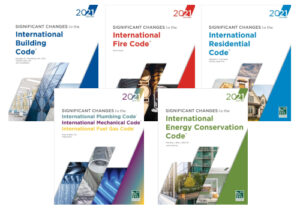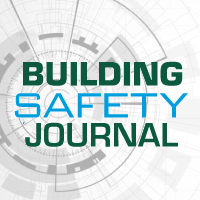
Significant changes to air leakage in the 2021 International Energy Conservation Code
A modification to Section C402.5 (Air Leakage) of the 2021 International Energy Conservation Code (IECC) states that in Section C402.5, air leakage requirements are expanded to include requirements for residential and non-residential air leakage testing and for building envelope performance verification for buildings not tested.
Air leakage testing was introduced as a compliance alternative to meeting the material or assembly selection and installation provisions of the 2012 IECC, and the requirements remained largely unchanged until the expansion of requirements in the 2021 IECC. Three significant changes related to air leakage are made to the 2021 IECC:
- New requirements for dwelling unit air leakage testing for Group R and I occupancies
- Revised and required air leakage requirements for occupancies other than Group R and I
- New performance verification requirements
Air leakage can be a significant source of energy waste in buildings, contributing to higher heating and cooling costs for building owners and occupants and impacting comfort and durability. Airtightness testing often results in increased attention to air barrier sealing and significantly reduced air leakage.
Adequate control over air leakage can provide many benefits, including reduced HVAC equipment sizing, better building pressurization and energy savings due to reduced heating and cooling of infiltrated outside air.
In moist climates, ensuring lower air leakage through whole building testing can also result in better humidity control and reduced risk of durability issues. Pacific Northwest National Laboratory’s technical brief, titled, “Envelope Air Tightness for Commercial Buildings” notes:
While it is important that the materials and assemblies have limited leakage, that alone does not guarantee a low leakage building. Recent research1 (Wiss 2014) shows that 40% of buildings constructed without an envelope consultant have air leakage exceeding the currently optional test standard requirements, while buildings with envelope consultants all had leakage below 0.25 cfm/ft2. Testing is the most reliable means of ensuring that the intent of this code section—limiting unintended energy waste in buildings due to air infiltration—will be achieved.
The updated air leakage testing requirements of Section C402.5 take into consideration occupancy type, climate zone and building size. Commercial buildings under 5,000 square feet can be tested using residential methods, technicians and equipment with the maximum leakage rate set at 0.30 cfm/ft2 (1.5 L/s 3 m2) at 0.2 in. w.g. (50 Pa). This testing pressure differential is common for residential testing and is equivalent to a leakage rate of 0.40 cfm/ft2 (1.5 L/s 3 m2) at 0.3 in. w.g. (75 Pa). Implementing the residential procedure can significantly reduce testing costs for these smaller buildings. Buildings that are not tested must meet the materials or assemblies requirements and the air barrier must be visually inspected. A final commissioning report is required for such inspections.
There are instances when the building is tested and it exceeds the maximum leakage rate. Section C402.5.3 provides reasonable options for mitigating air leakage when the rate is greater than allowed in the code but does not exceed 0.60 cfm/ft2, including the use of a smoke tracer or infrared imaging along with a visual inspection. Leaks must be sealed where it is possible to do so without destroying building components. Documentation showing all leaks that were found and mitigating measures must be submitted to the code official and building owner.
These provisions are applicable to both IECC compliance paths.
Read the full significant change.
 The 2021 Significant Changes guides are available for the International Building, Fire, Residential, Energy Conservation, Plumbing, Mechanical and Fuel Gas Codes. This valuable series can help any code user save time by zeroing in on the most critical changes in the 2021 International Codes. The Code Council’s technical experts provide summaries, analysis and graphics for these changes making them clear and easy to understand. Each edition provides a comprehensive analysis of significant changes since the 2018 edition, offering key insights into its contents and implications. Each change analysis features the affected code sections and identifies the change with strikethroughs and underlines to show modifications to the existing language. Each change is accompanied by a quick summary, detailed illustrations, and a discussion of its significance, which brings the technical jargon of the code to life in a real-world setting.
The 2021 Significant Changes guides are available for the International Building, Fire, Residential, Energy Conservation, Plumbing, Mechanical and Fuel Gas Codes. This valuable series can help any code user save time by zeroing in on the most critical changes in the 2021 International Codes. The Code Council’s technical experts provide summaries, analysis and graphics for these changes making them clear and easy to understand. Each edition provides a comprehensive analysis of significant changes since the 2018 edition, offering key insights into its contents and implications. Each change analysis features the affected code sections and identifies the change with strikethroughs and underlines to show modifications to the existing language. Each change is accompanied by a quick summary, detailed illustrations, and a discussion of its significance, which brings the technical jargon of the code to life in a real-world setting.
Significant Changes to the International Energy Conservation Code, 2021 Edition, is available in the ICC Store or through Digital Codes Premium.







